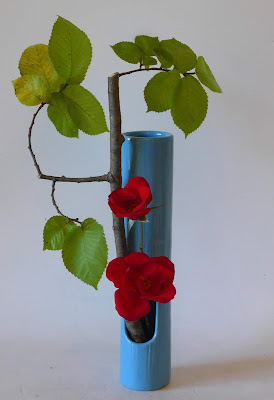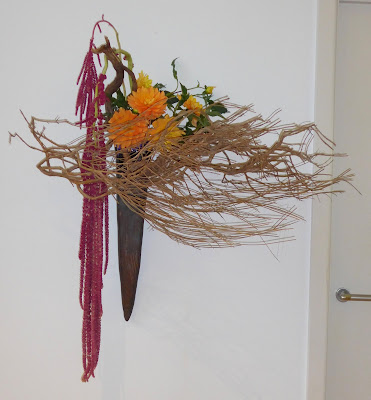Hello all,
These are trying times we are living in, we all need to find ways to cope, physically as well as mentally. I have some coping mechanisms I'd like to share with you and, perhaps, you can share yours with me. I can then post them in this blog for the benefit of all our readers. Please email me your ideas.
In preparation for this lock down, I bought fabrics and notions for a number of dressmaking projects. I. also. bought mulch, potting mix and seedlings with the intention of catching up on some much neglected gardening. I suspect when this is all over, people's gardens will be the best they've ever been. A little silver lining in an otherwise very dark cloud.
A couple of times I made a big pot of rice pudding (Greek style) and distributed it to the family and intend to do some baking as well. Of course, the most enjoyable activity for me is ikebana. Initially, I questioned whether I should bother making arrangements that no one will see but then I realised that I can share them with you. But most importantly, my ikebana would please me.
As I go about my chores I listen to audio books. The effect of this is somewhat like mindfulness, in that I'm engrossed in the book and, for a while, forget about the doom and gloom that surrounds us. I should have known better, however, than to download books by Margaret Atwood. She's an excellent writer but the dystopian societies that she writes about are a little too close to home at the moment. I abandoned, half way, the last book of hers that I was reading for something a little bit more uplifting.
Now, you would think that with all this preparation, I would be happily busying myself. But not so, I find I can't get motivated and I'm fighting a type of indolence, which is not like me at all. If I'm not careful, I could turn into a couch potato.
And so to ikebana. My variegated euphorbia, which was much admired whenever I used it, suddenly turned up its toes. I started to remove it and, to my delight, some stems still had some life left in them. So I pruned it right back and used the cuttings for the arrangement, above. I love the pinkish-maroon colour of the stems with the little tufts of grey foliage on the tips. I used three different coloured hydrangeas and a long stem of amaranthus.
My haemanthus lily has just flowered. It's fascinating the way the flowers come out of the ground, while their very large and fleshy leaves appear only after the flowers have died.
 |
| In the pot |
 |
| In a simple arrangement with squiggly grass |
And here are some other arrangements I played with.
 |
| Agave and crucifix orchid |
 |
| The last gloriosa lily and curculigo leaves (I think) in a wall arrangement |
 |
| Agapanthus and crucifix orchid |
Bye for now,
Emily
















































